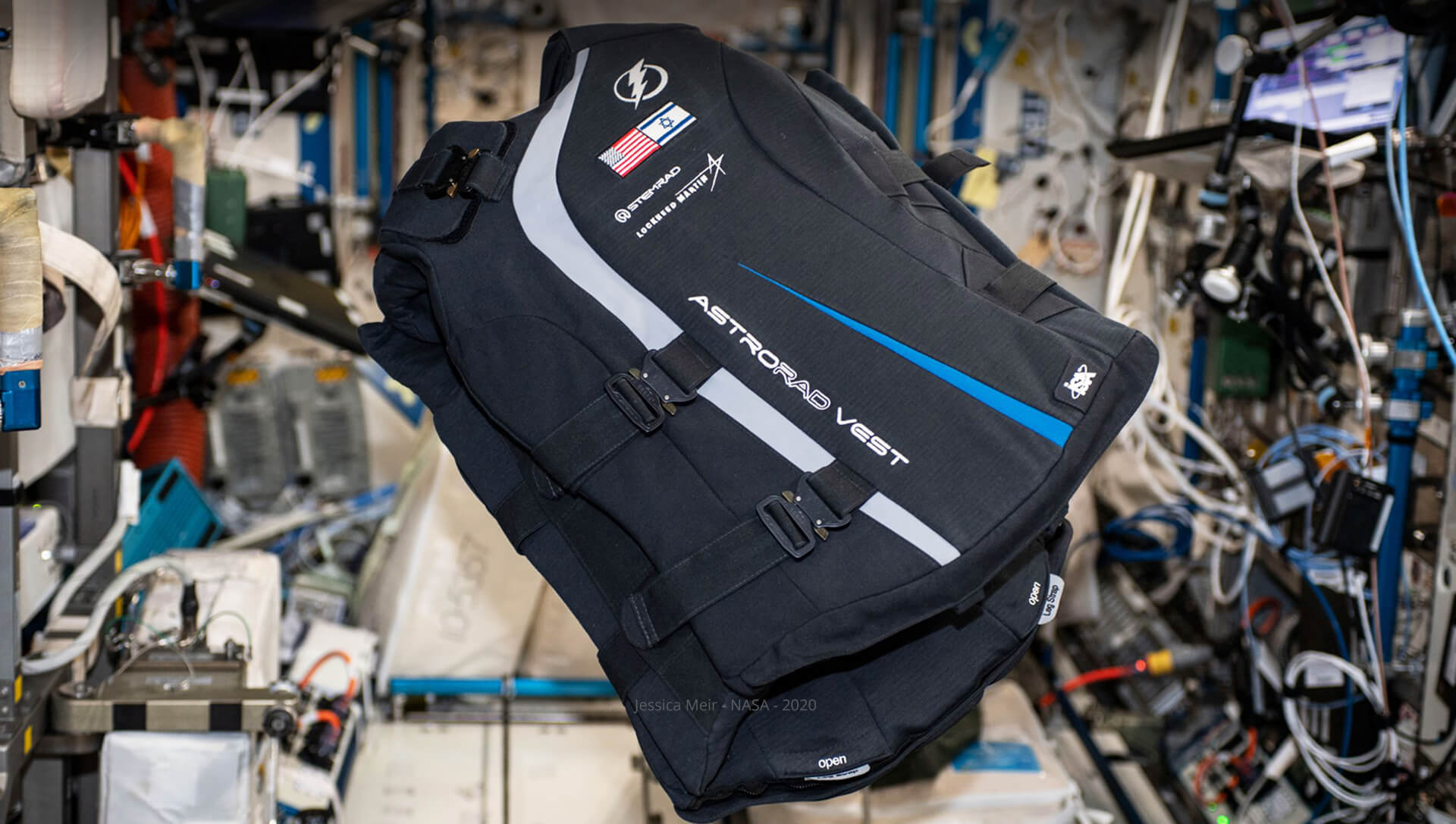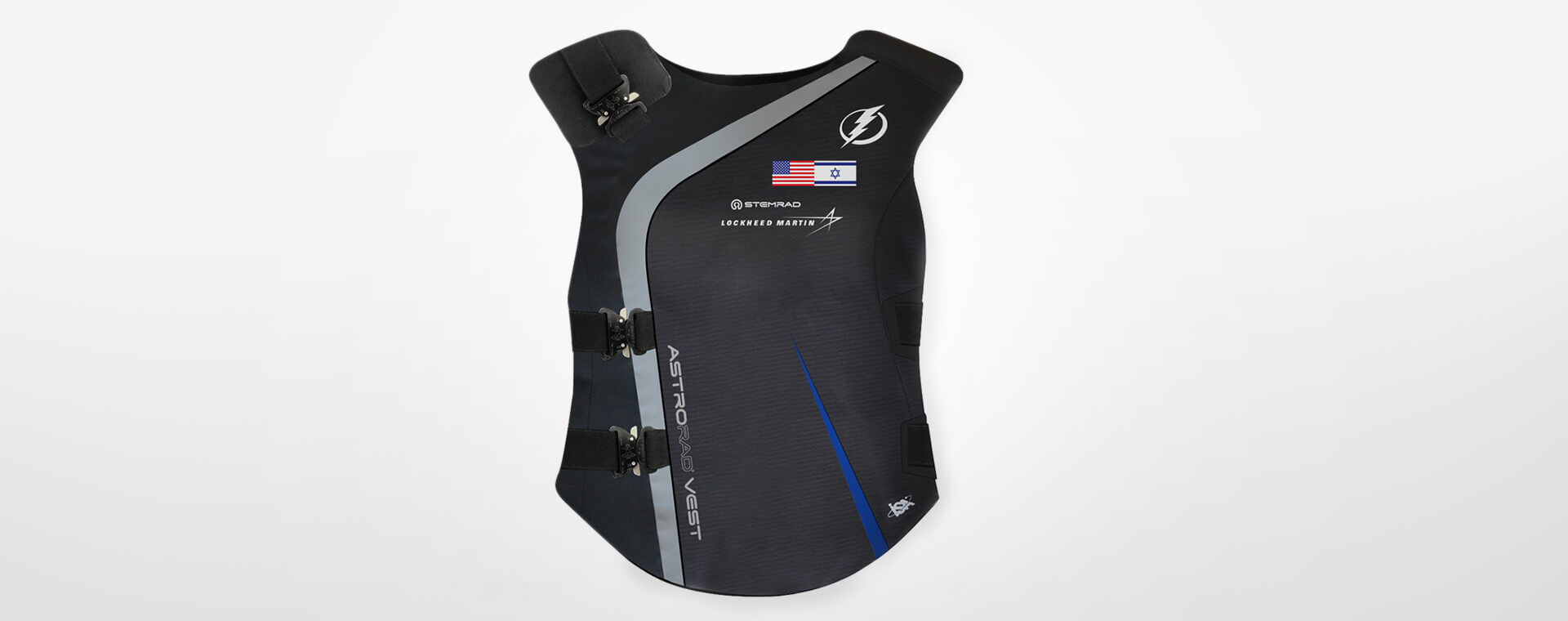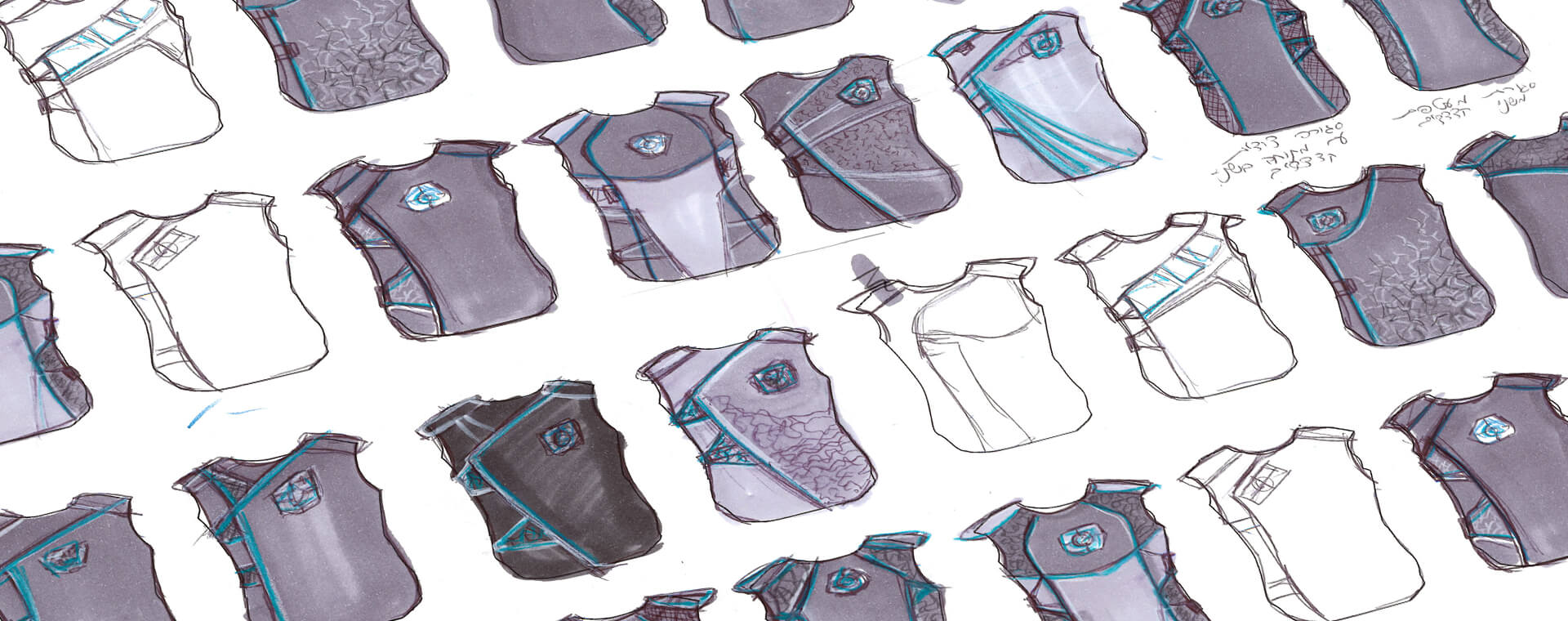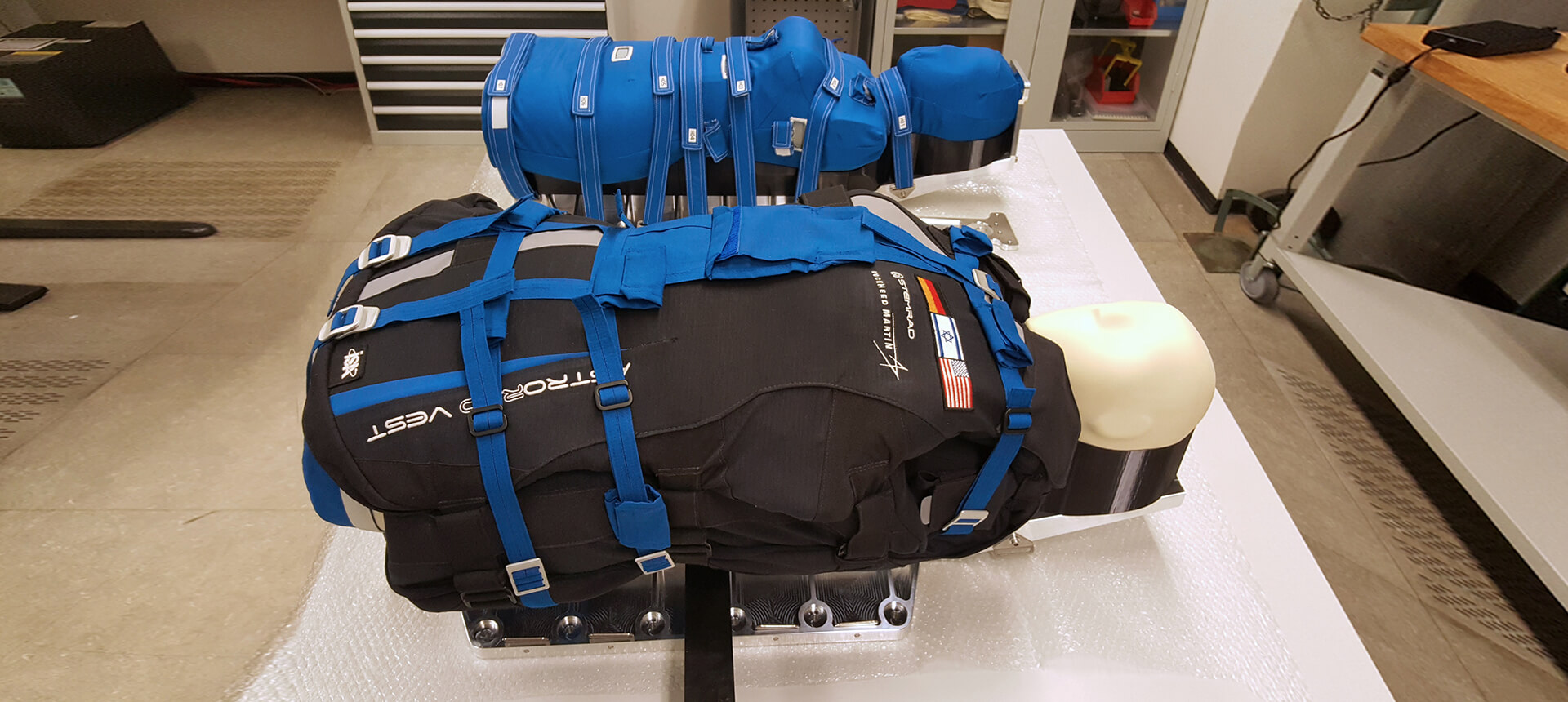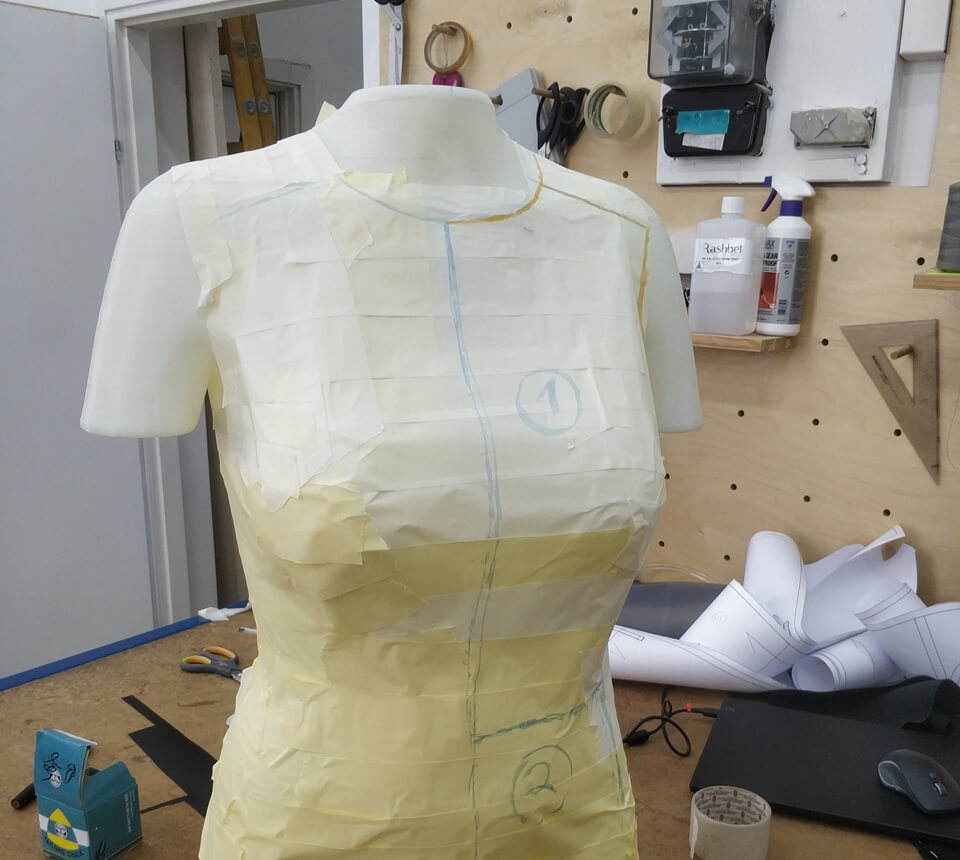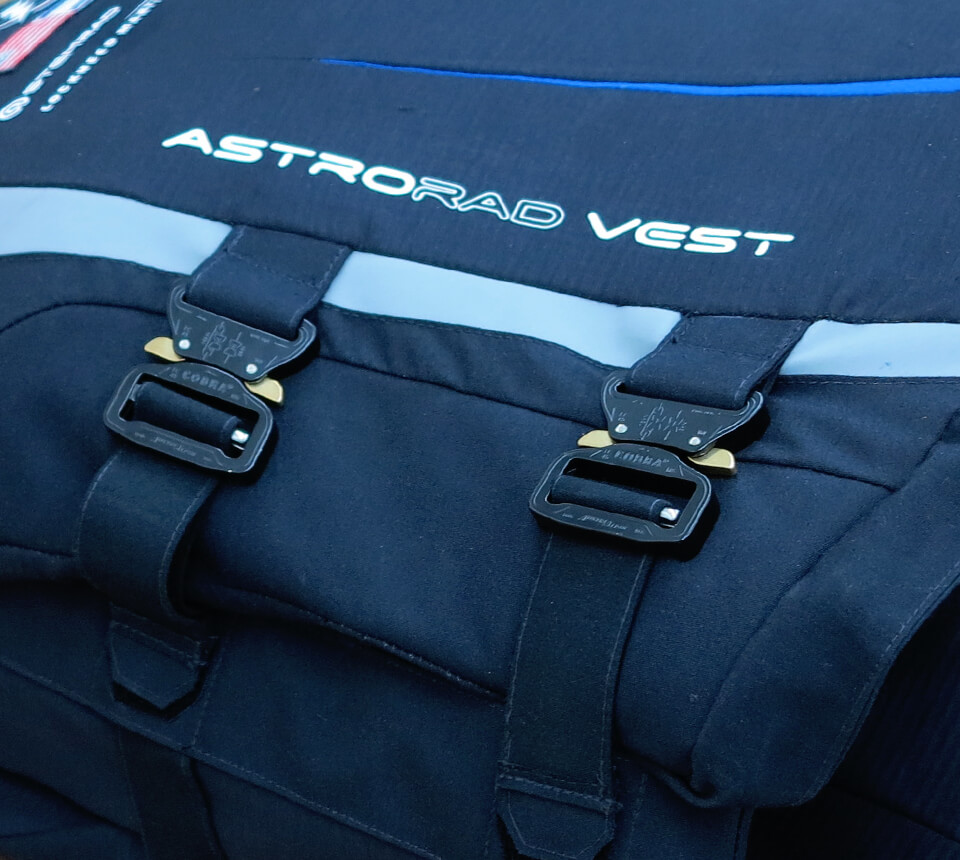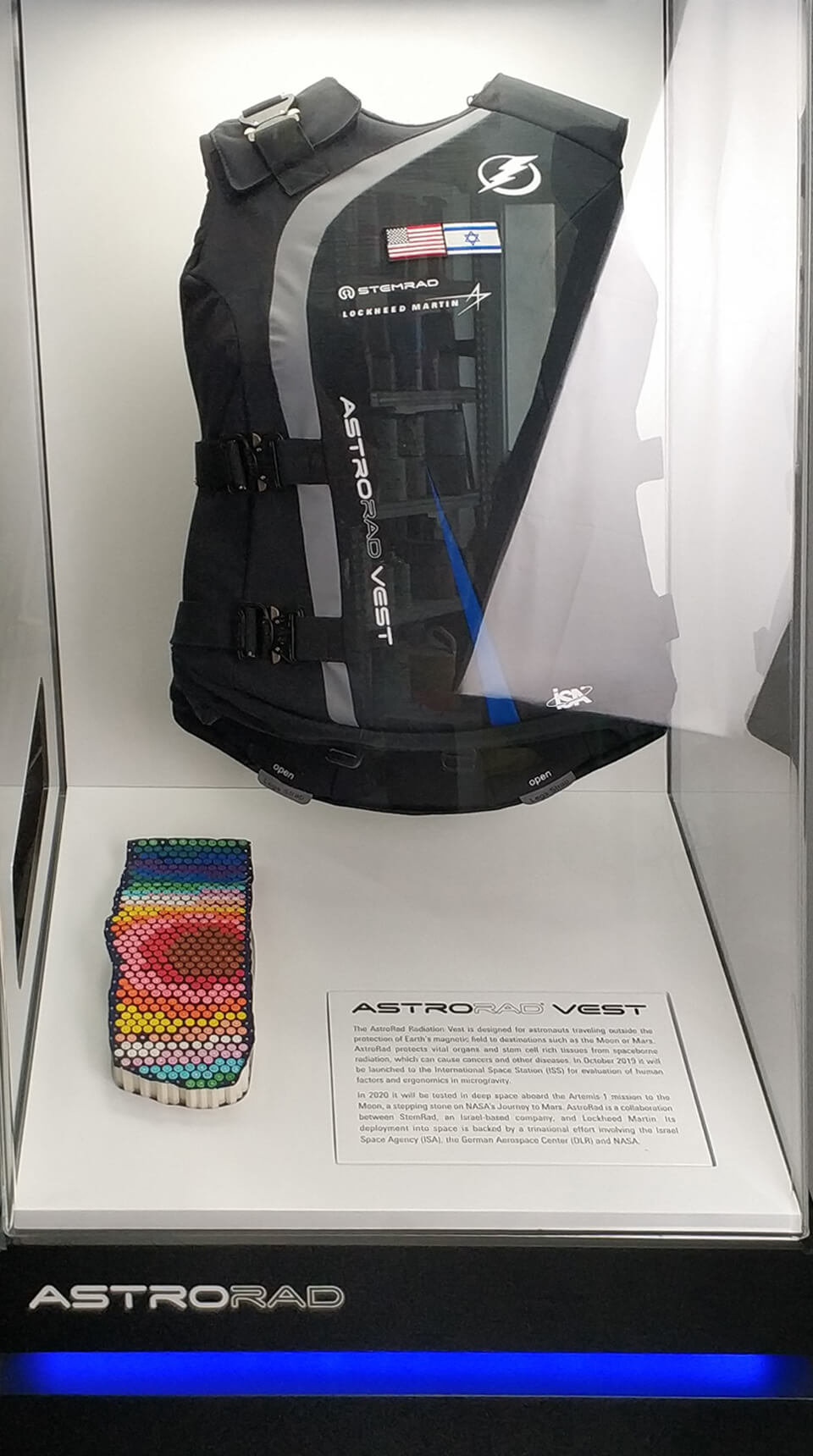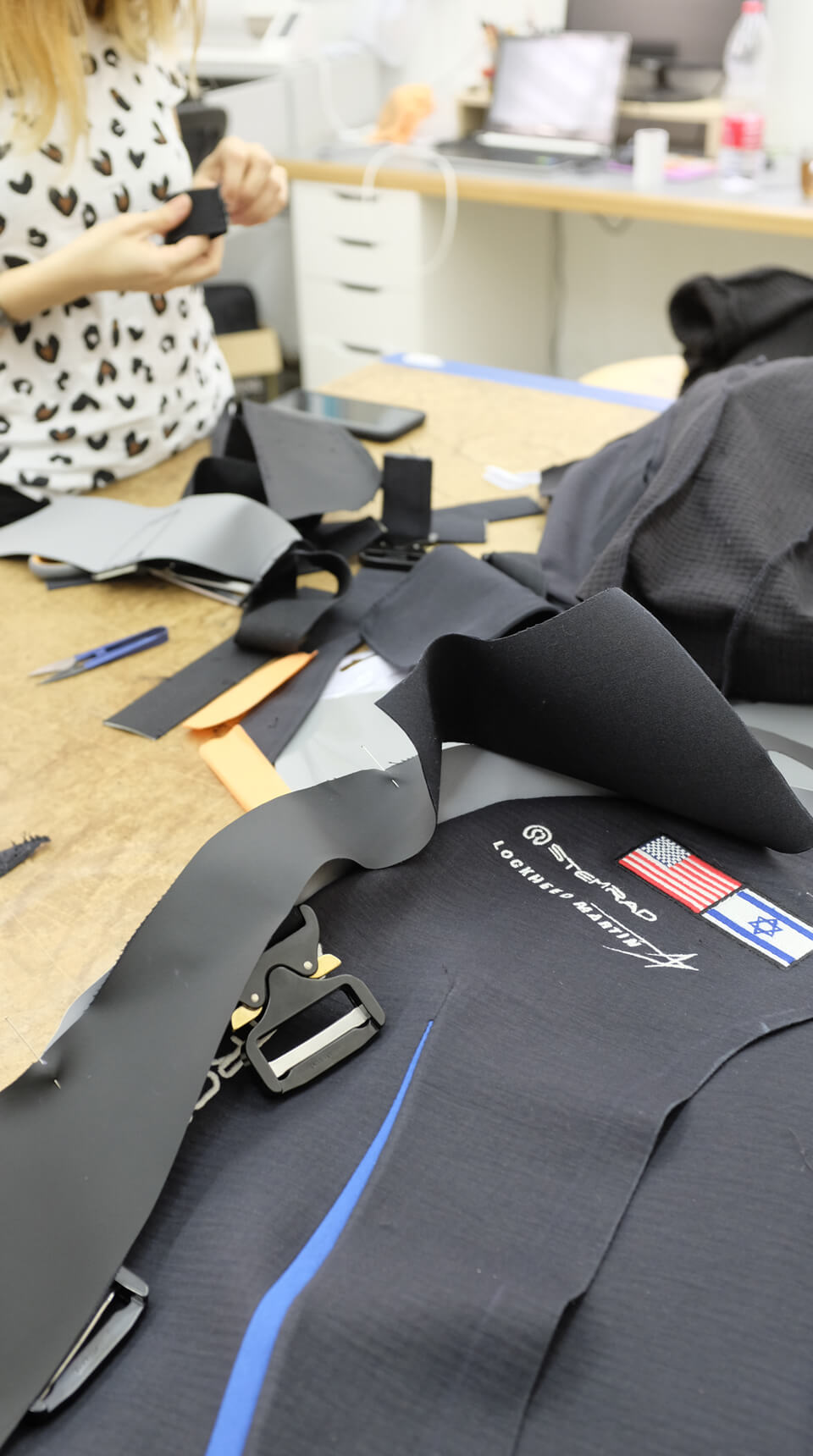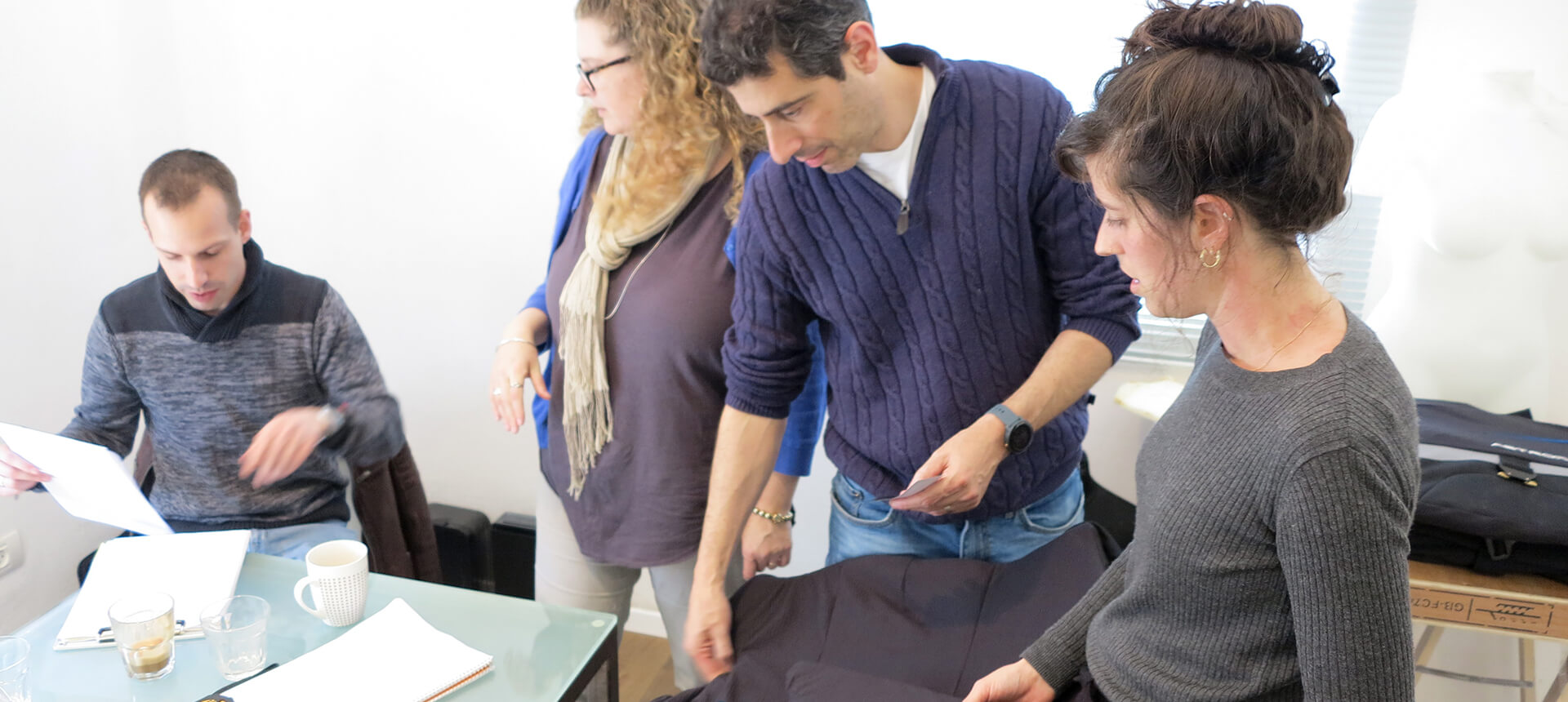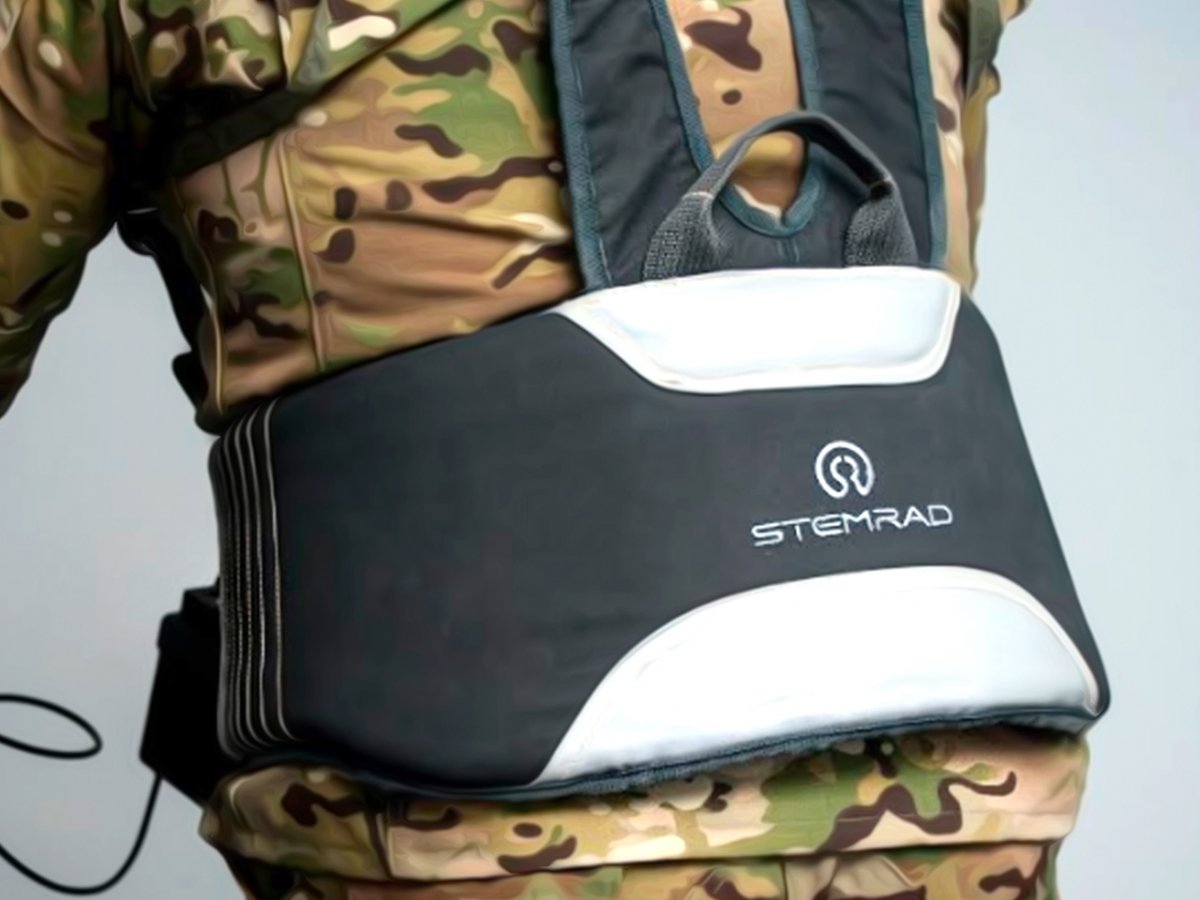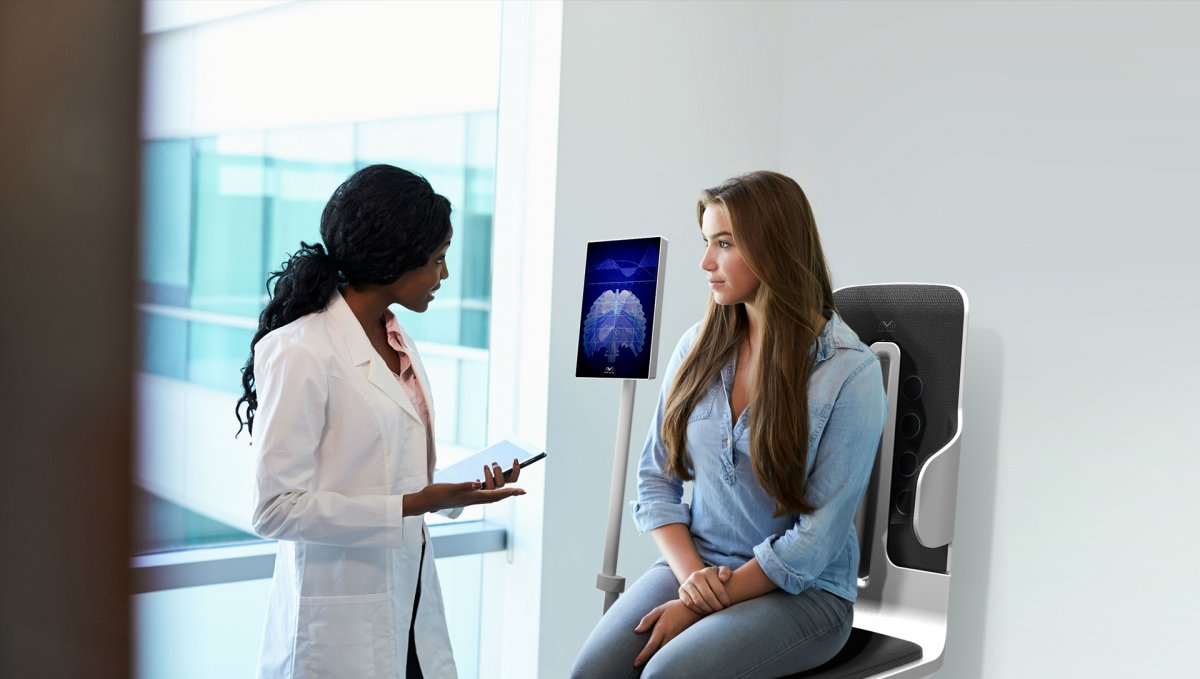Astrorad Astronaut protective vest
Protective vest for spaceborne radiation
StemRad has made personal radiation protection possible, making the lives of first responders, soldiers, astronauts and nuclear industry workers safer while they complete their critical tasks. Through scientific breakthrough and innovation, StemRad has enabled shielding to save lives The AstroRad is personal protective equipment for astronauts to wear beyond LEO that markedly reduces Radiation Exposure Induced Death (REID) such as cancer while eliminating the possibility of Acute Radiation Syndrome (ARS) due to SPE. AstroRad was co-developed by StemRad and Lockheed Martin to mitigate SPE effects, with initial research and development support coming from the Space Florida-Israel Innovation Partnership program.
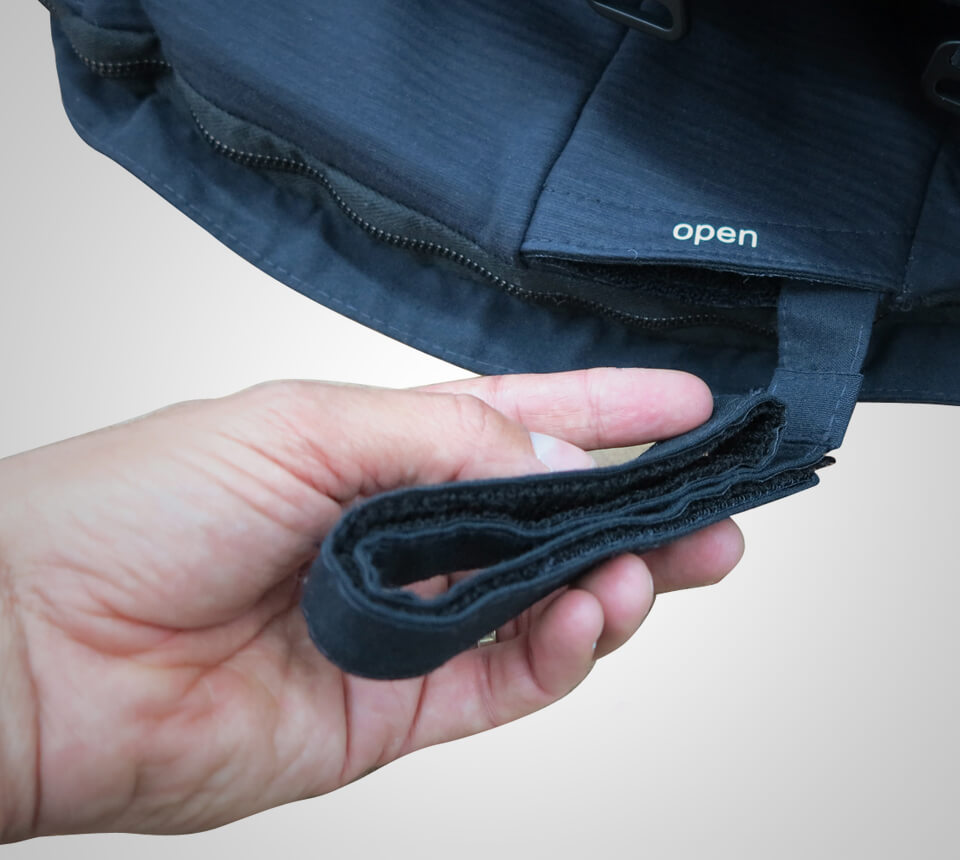
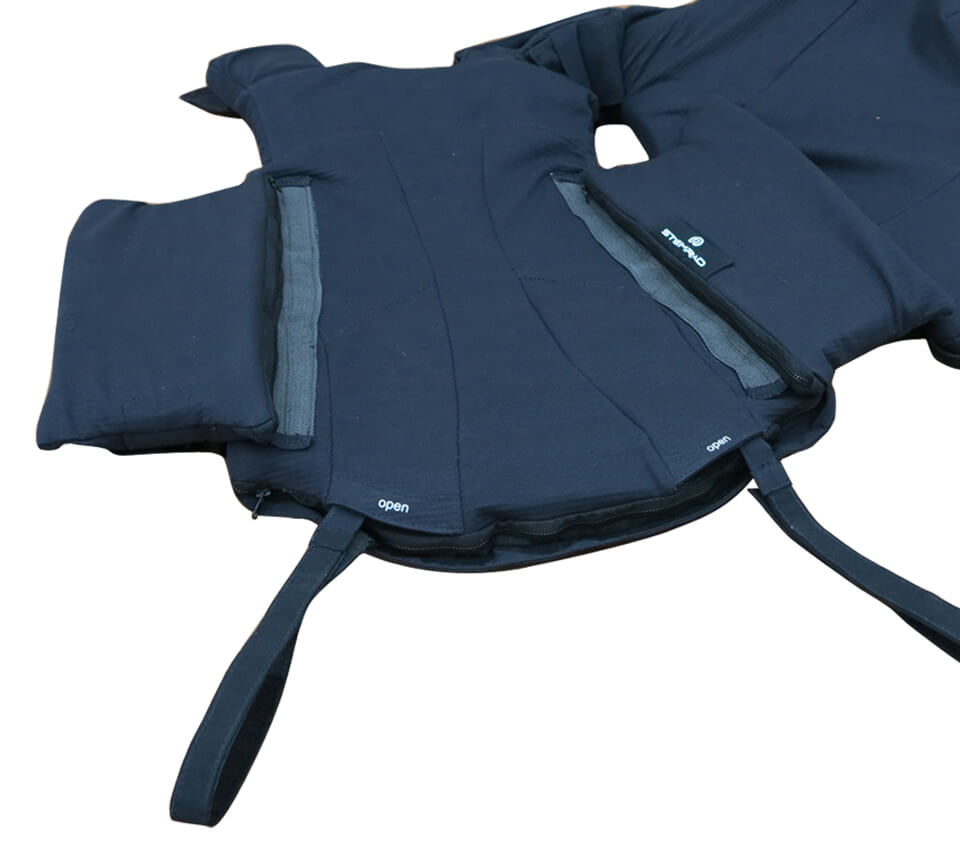
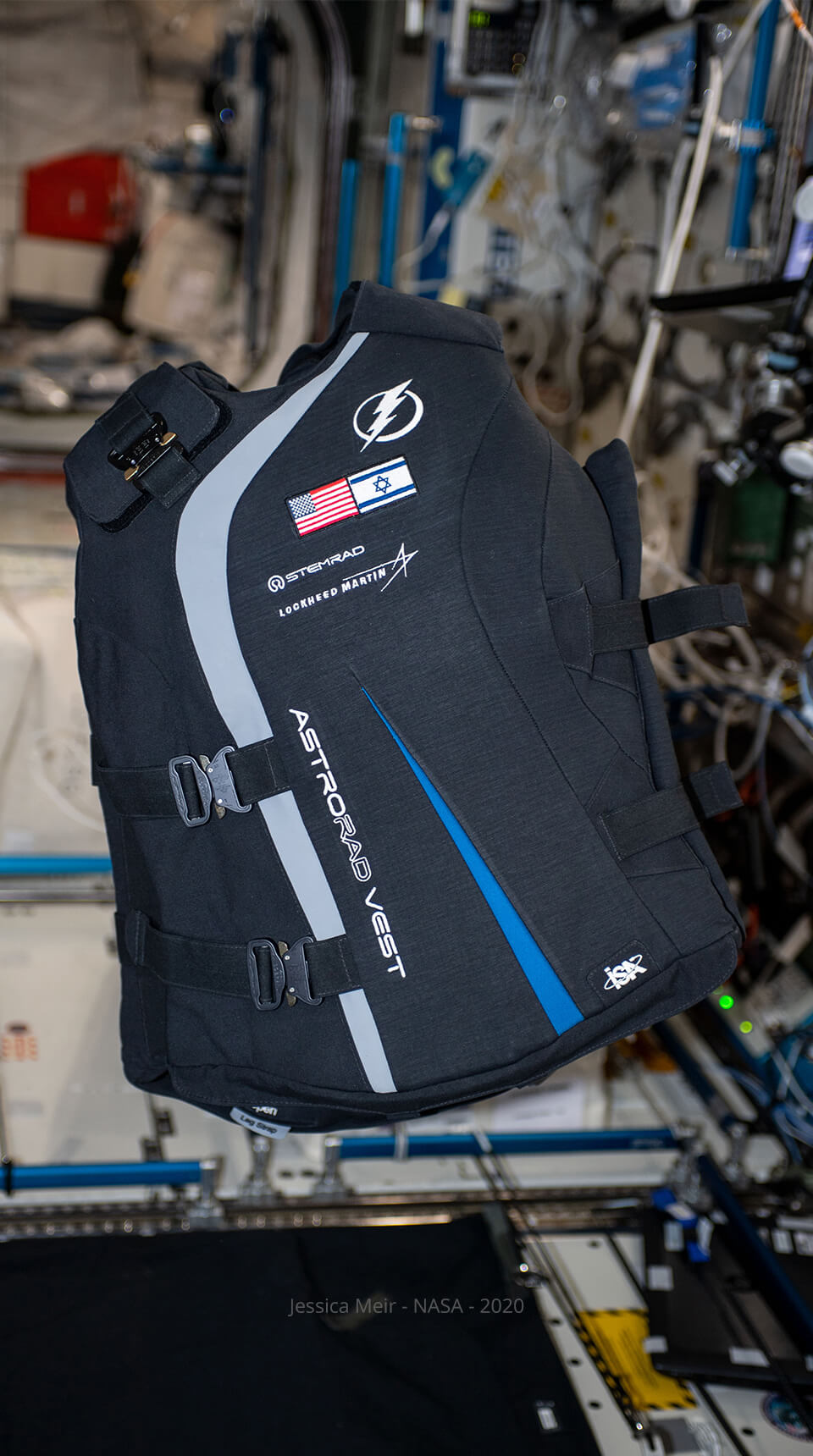
We joined the project at the stage of turning the core technology that was developed at Aran into a wearable vest that will support the ongoing tasks and daily activities of astronauts on their way to outer space. Together with Nomadity, Tiko's soft material arm, we kicked off the project. Space and micro gravity presented us with challenges we never experienced. How to perfect and evaluate the human engineering of an almost 60 lbs. vest on earth. How to simulate the sleeping posture of an astronaut without being able to float in midair. How to design the vest to be an object of desire though the needed volume for the protection core is so rather thick and the choice of material is strictly cut down to the approved NASA list.
The first ever vest has reached the International Space Station this November, unpacked in early February and is about to be tested by astronauts in a human engineering and user experience trial. An additional vest was already delivered and is now prepared for the upcoming Lockheed Martin's Orion spacecraft first unmanned flight to the moon later this year. Two dummies equipped with spaceborne radiation sensors will be on board of this unmanned flight.
I have worked with many design studios and they are hands down the absolute best.
Oren Milstein, PhD, CEO and co-founder
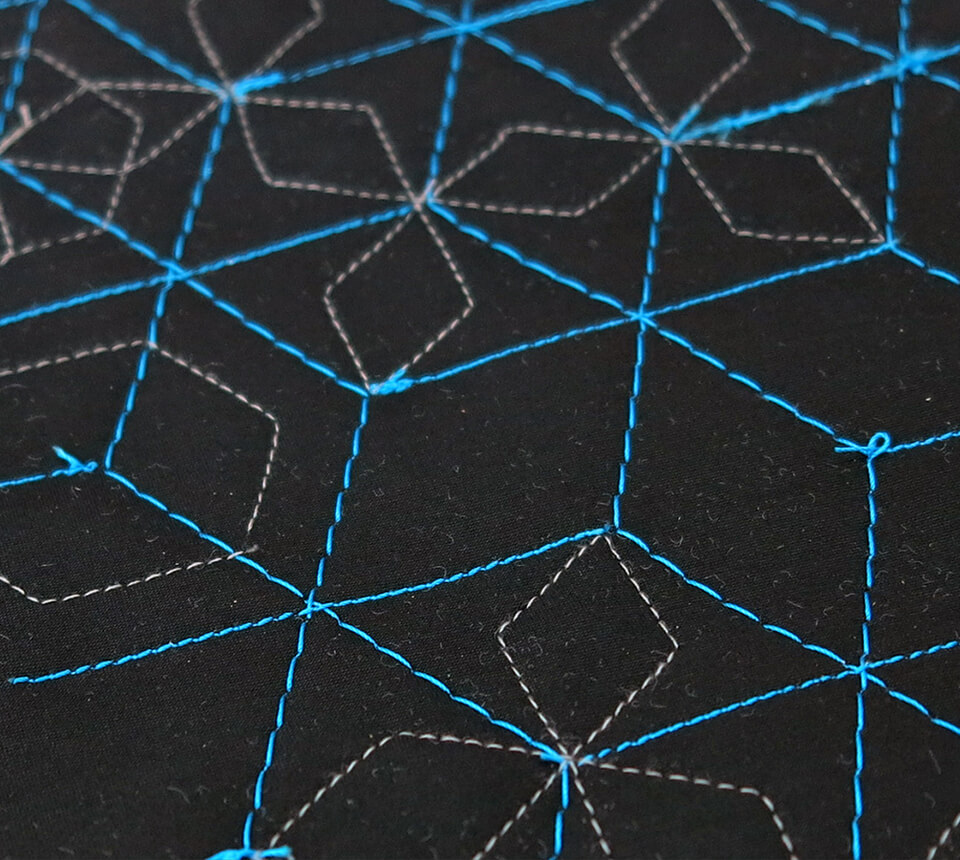
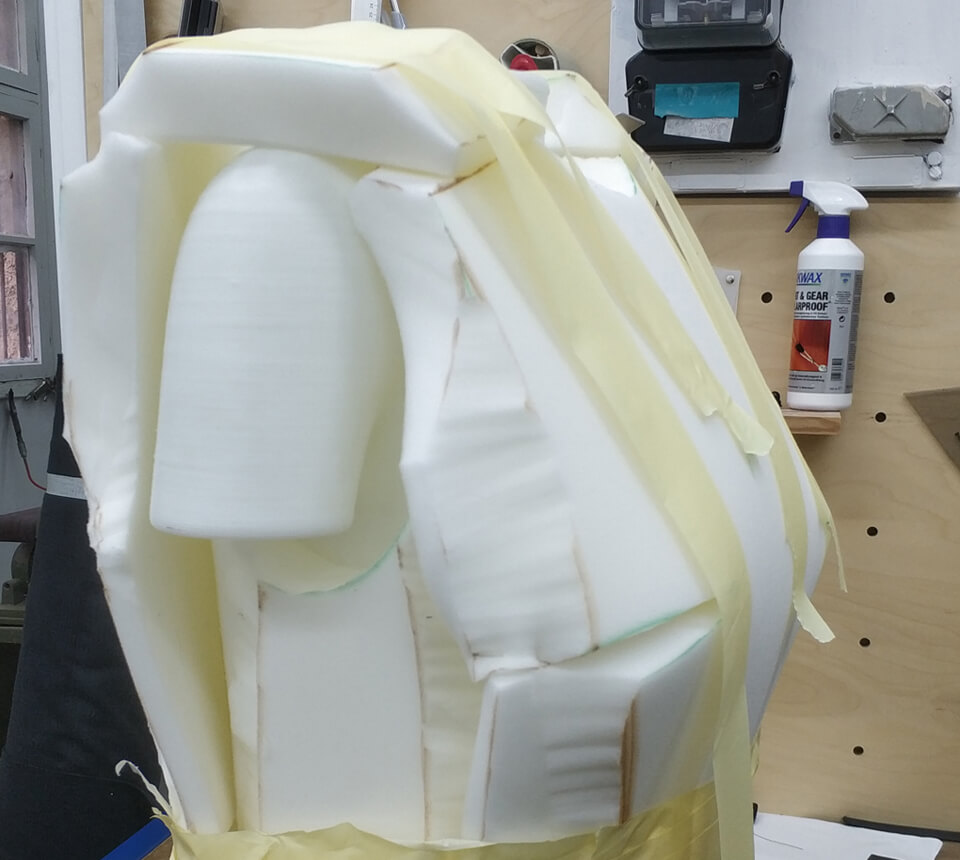

Each dummy will take up one seat in the Orion spacecraft during Artemis 1, a crewless NASA test mission that is integral to the agency's plans to land the first woman and the next man on the moon by 2024, and later on, manned mission to Mars. One of the dummies will sport the AstroRad vest. The other will go without protection. The accumulated readings from the month-long flight will provide data regarding the efficiency of protection from the radiation generated by the sun in deep space.
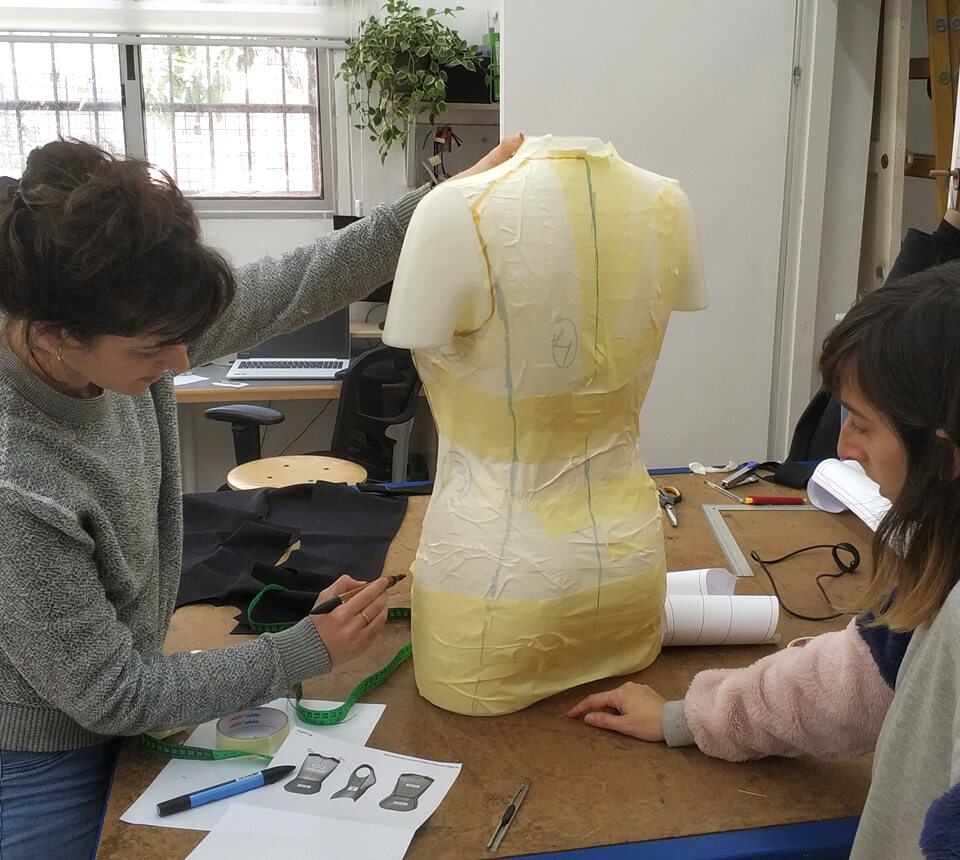
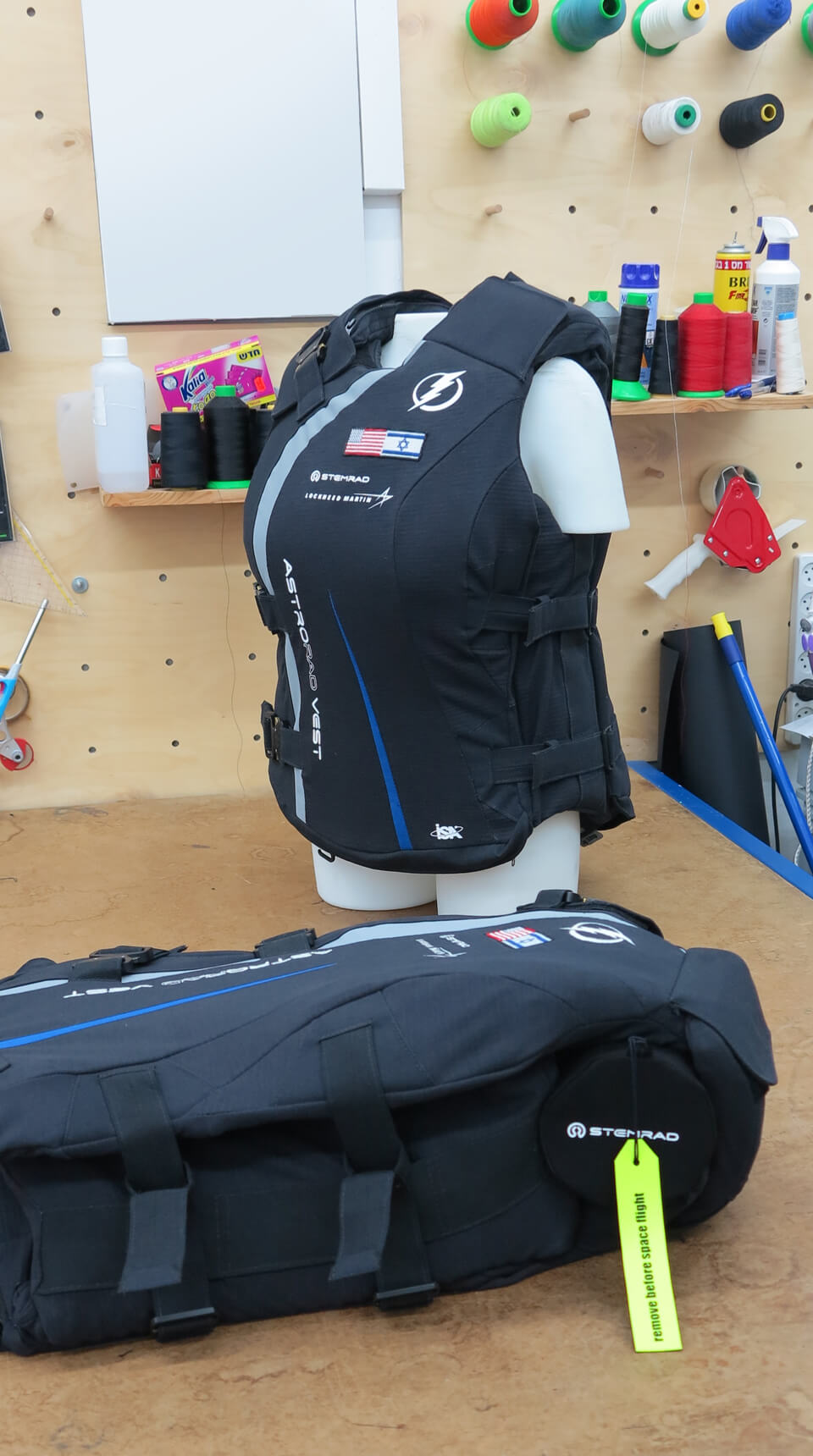
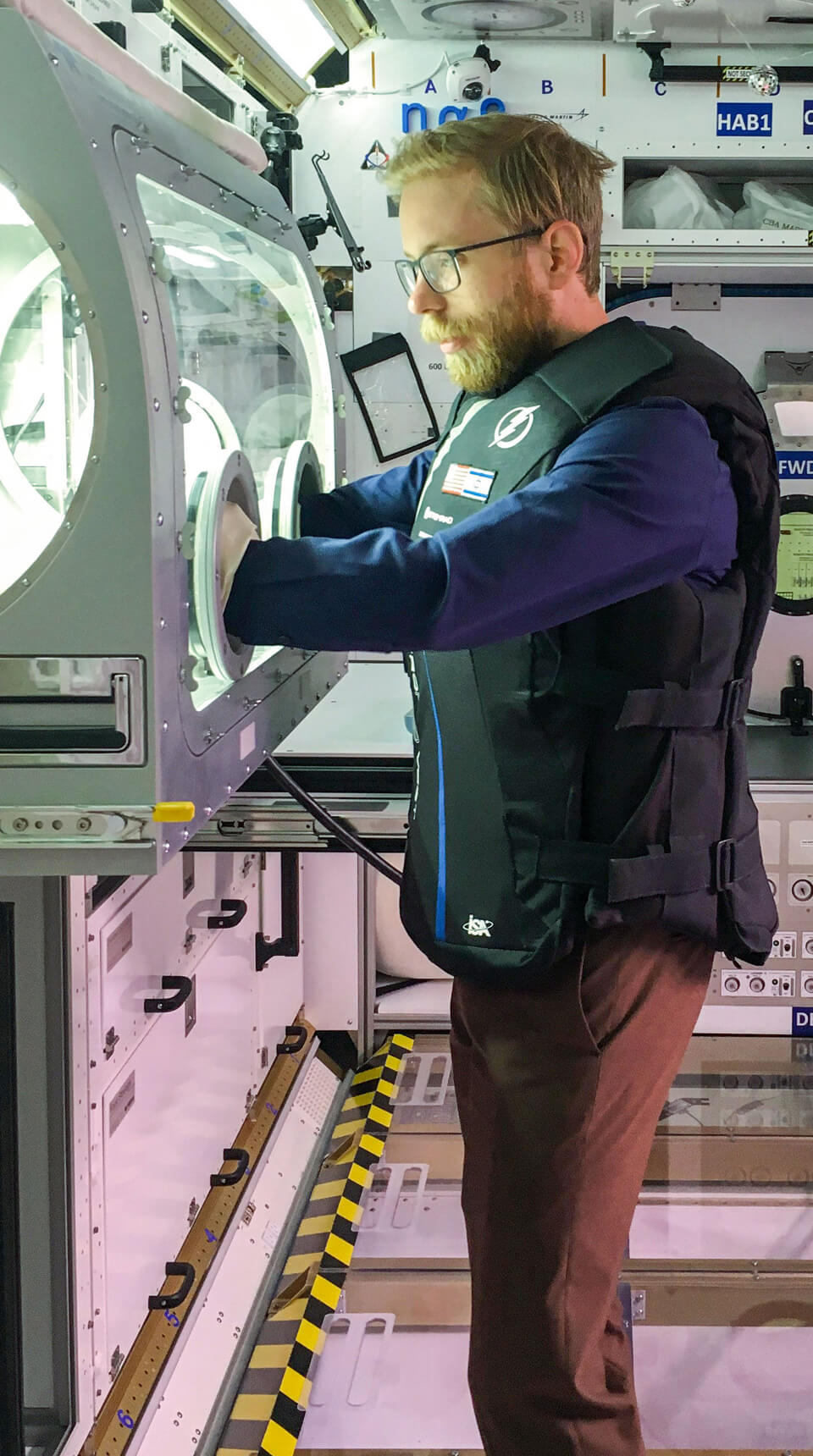
VIEW SIMILAR PROJECTS
Let's talk
We always love to meet new people and help them create, build, design, and produce their dreams. Become a partner - Drop us a line.
contact us